Cover Roast Beef With Foil or Not

In the name of science and my taste buds we will decide whether to foil or not to foil a brisket to see which results are better.
I know that I want to smoke briskets and for serving purposes I am leaning towards the untrimmed brisket flats.
The untrimmed brisket flat is just the flat portion of the brisket and it doesn't have the point so all of the meat can be sliced.
When you buy it untrimmed it comes with a ¼ inch of fat on the bottom which is much better than the standard grocery store trimmed brisket flat which barely has any fat.
You need all that fat on there to keep the meat moist since it will be smoking for so long.
It turns out that Costco sells these untrimmed flats in their original cryovac for really cheap. I got two 6 lb brisket flats for about $32 total.
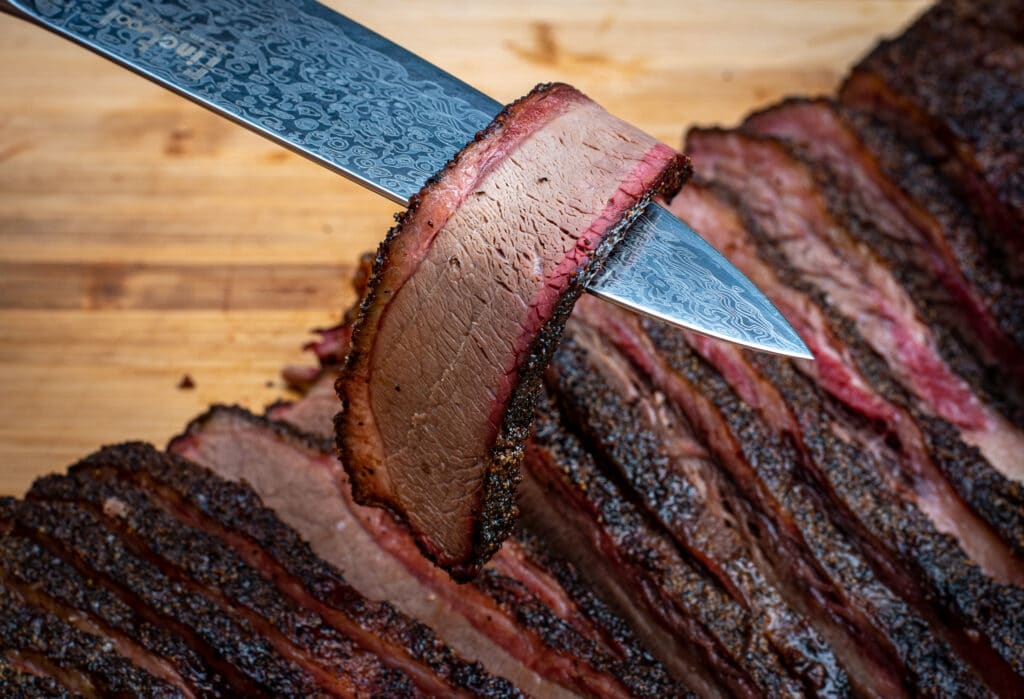
To Foil or Not to Foil – Beef Brisket Flat
The point of today's exercise is to determine which brisket is better: one that has been foiled (i.e., the Texas Crutch), or one that has spent all of its time on the smoker with no foil.
The results of this little test might surprise you.
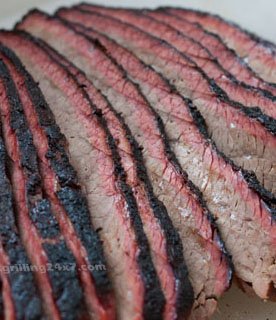
Ingredients for the Brisket Flat Dry Rub (apply lightly – it's salty):
½ cup salt
2 T black pepper
1 tsp sugar
½ tsp of ground chipotle chili pepper
½ tsp chili powder
1 tsp garlic powder
1 tsp dried onion flakes
The goal here was to test two methods of smoking a brisket and then use the method which yields the most tender brisket for my upcoming party.
Method 1- Texas Crutch (Foiled)
Put brisket on the smoker. When the internal temperature of the brisket reaches 160 degrees wrap it in foil and continue to cook until about 200 degrees.
Method 2- No foil
Put brisket on the smoker and smoke until it is tender (about 200 degrees internal temperature).

At 7AM I put the brisket rub on both brisket flats and let them sit at room temperature while I got the smoker up and running.
I know a lot of people who put the dry rub on the night before and this is fine. I'm just not so sure that I can really taste the difference.
Its much easier and less to clean up to just add the rub in the morning before the smoke.
I got the smoker up to temperature rather quickly and added the briskets to the bottom grate and "middle grate" of my Weber Smokey Mountain Smoker.
Leave the top grate empty since for the party this grate will be full of pork shoulders.
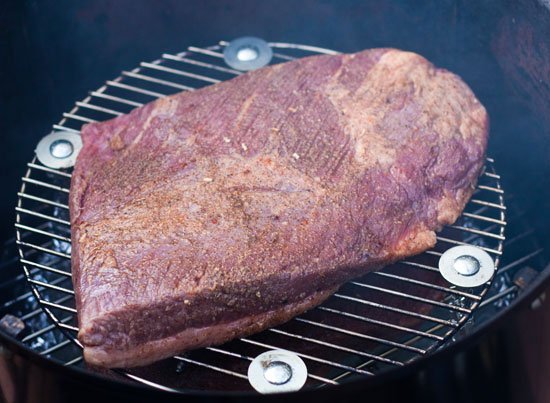
The following table shows the cooking temperatures for the day:
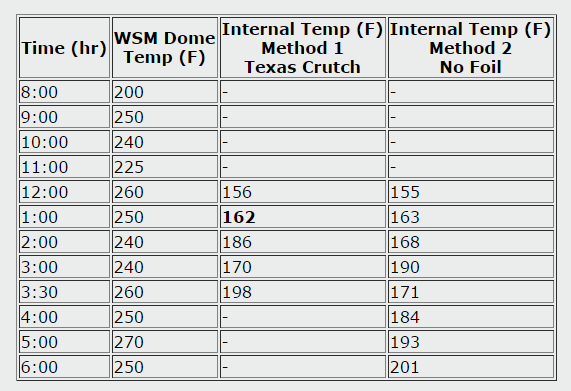

Photo taken at 1PM
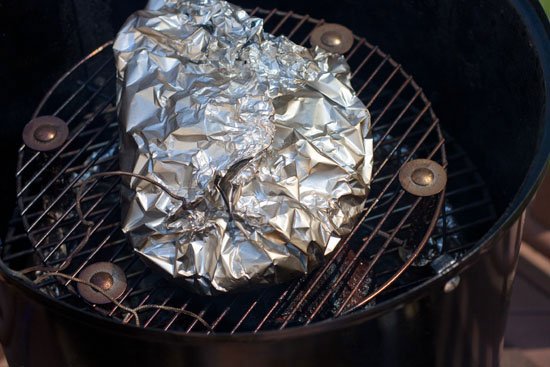
Method 1 – "The Texas Crutch"
As you can see from the table above, the foiling really accelerates the cooking time.
Within one hour of foiling the two briskets had an internal temperature difference of about 20 degrees! Wow!
At 1PM the Method 1 brisket was foiled and it was finished cooking by 3:30! I took it off the smoker with an internal temperature of 198 degrees.
I wrapped this brisket with some more foil and kept it in a cool oven to rest for an hour or so prior to slicing.
The method 2 brisket remained on the smoker for another 3 hours.
It really developed a nice bark and surprisingly stayed moist on the exterior with no mopping.
At 6 PM this brisket reached 201 degrees internal temperature so I took it off the smoker and wrapped it tight in foil and let it rest in a cool oven for an hour prior to slicing.
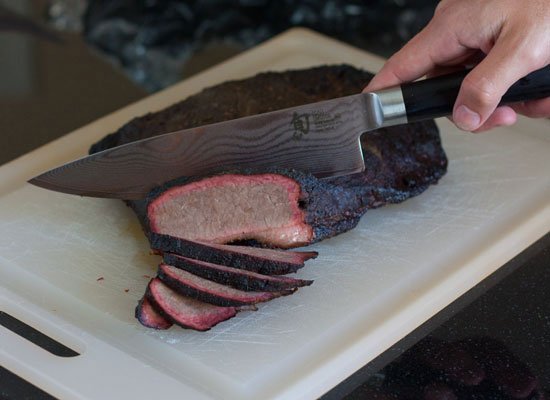
Oh the moment we have been waiting for: slicing the brisket flat! Since the brisket was so tender it would have been easy to shred apart but I managed to slice the brisket pretty well.
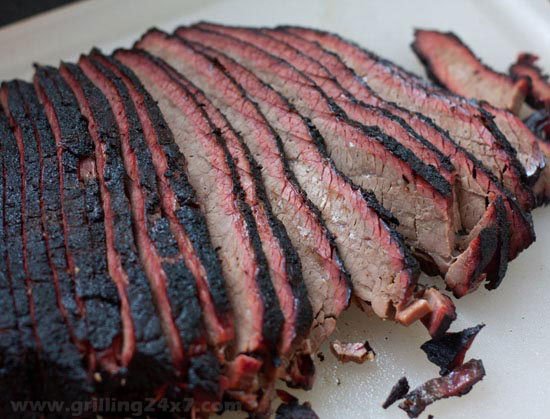
The Results
When I was comparing the brisket methods one stood out as the winner.
The no foil Method 2 was so much more tender and had a much better bark and smokey flavor.
The foiled method was a bit tougher. It reminded me slightly of pot roast.
Now, I don't want to say that it wasn't good, I mean it did make a great brisket sandwich!
However, when compared to the no foil brisket it didn't have a chance. Now multiple issues could be at play here and by no means is this conclusive evidence that foiling a brisket is a no no.
The first thing that stands out to me is finishing temperature. I took the foiled brisket off the smoker at 198 while I took the no foil brisket off at 201.
According to the BBQ world this is a big difference and it's right in the region of temperature debate. Some people pull briskets off the heat in the 190s and some pull them off the smoker in the 200s.
From now on I'll be aiming for 201! The no foil brisket that finished at 201 degrees and was allowed to rest for 1 hour prior to slicing was amazing.
One other thing that was different between the two briskets is that the no foil brisket was positioned under the foiled brisket.
For the first 5 hours the fat from the brisket on top was dripping down on this brisket.
Of course after foiling the dripping stopped but perhaps there could be some added moisture from this dripping process.
Recap
For my purposes I was able to make amazing brisket slices by doing the following: Dry rub at 7AM, put the brisket on the smoker at 8AM.
Remove the brisket when the internal temperature reaches 201 (6PM) and wrap tight in foil for one hour prior to slicing.
When reheating the next day use a 275 degree oven for one hour and reheat it with BBQ sauce and grated butter. That's my plan!
Reheating Brisket The Next Day
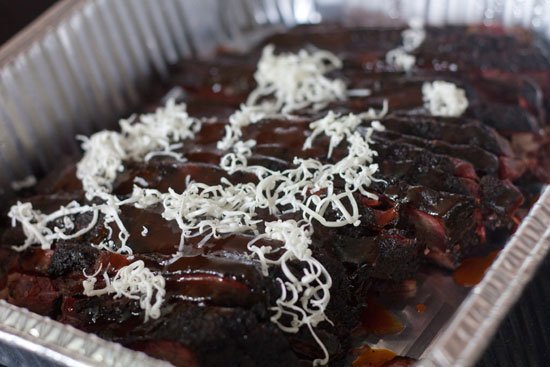
I also wanted to test both briskets the next day. This cooking time shown above doesn't really work well with a party unless you want to start smoking at 2AM.
Most of the time my plan is to smoke on a Saturday for a Sunday party so this is what I wanted to recreate here.
The next day I put the refrigerated brisket slices in a 275 degree oven for 1 hour. I generously applied my whiskey BBQ sauce to the brisket and I also used a cheese grater and grated some cold butter over top before it went into the oven.
I'm a bit hesitant on reheating brisket with no sauce.
You need moisture during the reheat or else you risk drying out your tender brisket.
Use a foil tin and tightly sealed it with more foil. I think this allows the brisket to steam a bit during the reheat.
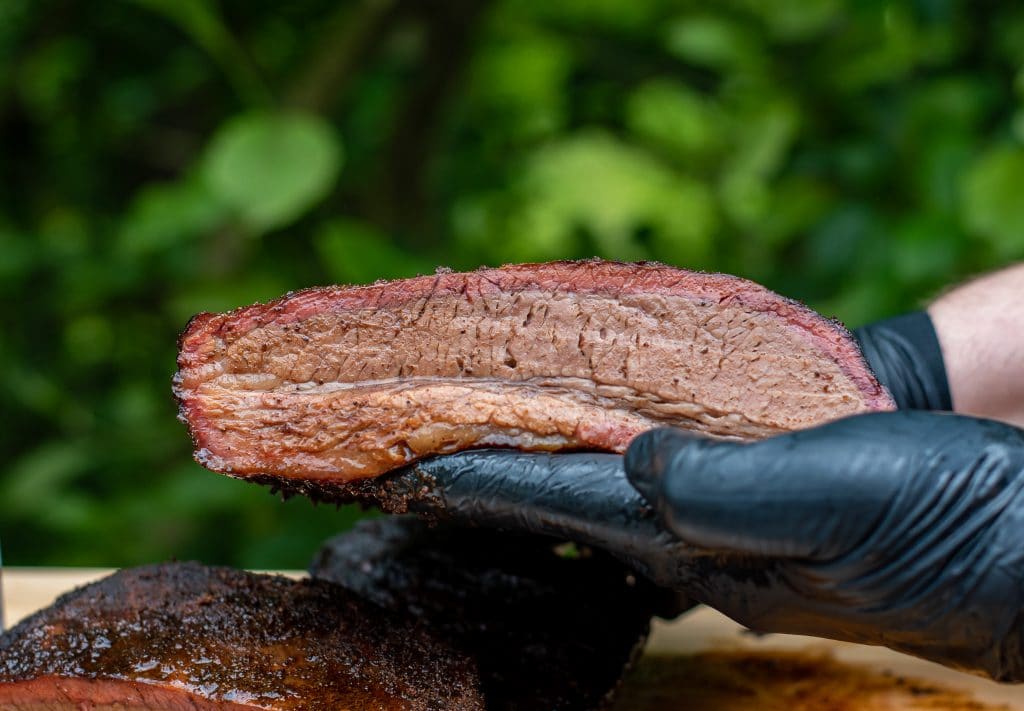
Disclaimer:
I'm well aware that brisket is very tricky to cook. While foiling didn't work out well for me here I know for a fact that many pro BBQ teams swear by it.
All I'm saying above is that for my setup I'm going to skip the foil… for now.
It is also important to note that reheating the leftover brisket the next day can take tough – not so great- brisket and make it really good the next day.
So if you are upset that your brisket is a bit tough do the above reheat trick the following day and I bet it will fall apart and be amazing for you.
More Recipes You Will Love
martinwhichisatur.blogspot.com
Source: https://grilling24x7.com/to-foil-or-not-to-foil-a-beef-brisket/
0 Response to "Cover Roast Beef With Foil or Not"
Post a Comment